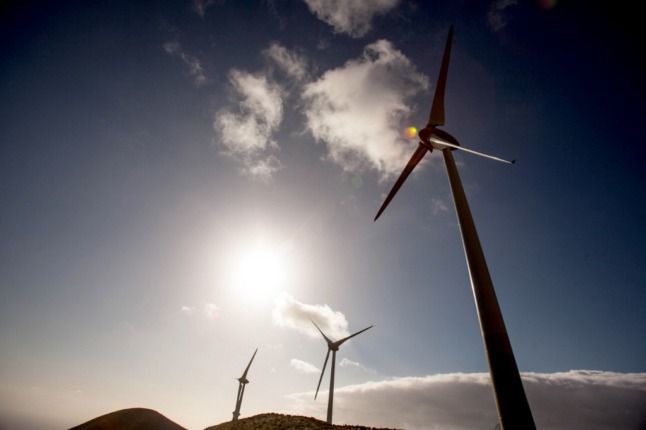The price of electricity in Spain’s wholesale market has been set at €544.98 per megawatt hour for Tuesday March 8th 2022, a €100 rise in just 24 hours and an all-time record for Spain’s energy sector.
Between 7pm and 8pm on Tuesday, Spaniards will pay €700/MWh for electricity, truly outlandish rates.
A year ago, the average price per megawatt hour was just €45.44, although over the course of 2021 the price did first double and then quadruple that rate as the Covid-19 pandemic, inflation, adverse weather and a volatile natural gas market all formed the perfect storm for consumers.
And yet, those sky-high rates pale in comparison with what people in Spain now have to pay, with Russia’s invasion of Ukraine proving to be the straw that broke the camel’s back.
The same is now happening in Germany, France and Italy (although not quite to the same extent as in Spain), increasing pressure on Brussels to find ways for the EU’s natural gas and electricity markets to not be so closely aligned.
To be clear, the record €544.98 megawatt hour (MWh) rate does not mean that every person’s monthly electricity bill in Spain is going to be in the thousands of euros (for interest’s sake, the average Spanish household consumes 0.0099 megawatt hour).
But you are likely to pay more. Over the course of 2021, people in Spain paid an average of €949 in electricity compared to €675 in 2020.
So the forecast under the current climate of war and global energy crises will mean your monthly bill could easily rise by €20 or €30, perhaps higher.
To help you counteract this spike in electricity rates in Spain, here are 11 tips that can help you reduce consumption and thus costs during this period of extreme market volatility.
Familiarise yourself with Spain’s cheaper electricity times
It’s become more expensive to use electricity in the first part of the day from 10am – 2pm and in the evenings from 6pm – 10pm from Monday to Friday.
The average times are between 8am – 10am, 2pm – 6pm and 10pm – midnight.
The cheapest times will be in the early mornings on weekdays and all day on Saturday, Sunday, as well as national holidays.
Adapt your contracted power to your real needs
Those on an estimated energy tariff could switch their contract to one that only charges them for the electricity they actually use and need. Free power changes are allowed until May 31st, 2022. This must be requested through your energy provider.
Check the maximum power and usage data
Check on your energy provider’s website to find out your consumption data and adjust your contracted electricity accordingly. Spain’s National Markets and Competition Commission (CNMC) suggests that this could save you up to €16 per year by doing this alone.
Avoid too much usage all at once
Using more than one appliance or electrical device at the same time pushes up consumption. For example, if you use the oven, the kettle and the washing machine at the same time, you will pay a lot more on your bill than if you use them separately. The CNMC has also said that “the iron is one of the devices with the highest consumption. Avoiding turning on all devices at the same time can lead to savings of between €200 and €300 per year”.
Shift consumption to periods outside peak hours
If possible, change the times when you use the most electricity. For contracted power during the cheapest times, the price is actually 95 percent lower than in the highest period.
Avoid stand-by mode on devices
Keeping televisions, laptops and other electronics and appliances plugged in and in stand-by mode whilst not being used does add up in the long run.
If you unplug or switch off the current to these devices this can result in reducing your electricity bill by up to 10 percent annually.
Use LED bulbs and remember to switch the lights off
LED bulbs use up to 80 percent less electricity than regular bulbs. Even though they are more expensive, they last 12 times longer on average.
The average annual saving on people’s electricity bills when replacing normal bulbs with LED ones was €14 per bulb in 2018, before Spain’s electricity rates skyrocketed.
And although it may seem obvious, remembering to switch off lights and prioritising natural light in sunny Spain is a no-brainer if you want to cut costs.
Wash your clothes at less hot temperatures
As a basic rule, washing machine programmes running at low temperatures consume less than those running at higher temperatures. For example, washing clothes at 40°C instead of 60°C saves up to 55 percent consumption.
Use your fridge efficiently
As with the washing machine and dishwasher, it is possible to reduce electricity consumption through the refrigerator if you adjust its temperature to around 5°C and the freezer temperature to -18°C .
In the case of the freezer, it’s also important to defrost it regularly, since the accumulation of ice can increase consumption by up to 30 percent.
Reduce your spending on heating
First, keep in mind that electric heating can be up to five times more expensive than gas heating in Spain.
Remember also for each degree you put the heating up, consumption will increase by 7 percent, so try to put on a jumper instead of keeping your heating above 20 °C.
Don’t overdo it with the air conditioning
This may be a big ask for those who live in parts of Spain that get extremely hot during the summer months, but there are few ways to cut costs of this high-consumption device.
Buy an air con machine with an inverter system rather than one without as they’re 40 percent more efficient, install it in a place that doesn’t receive direct sunlight, use blinds and sunshades to help to keep your home cool during the hot hours of the day, and when temperatures drop in the evening switch off your air conditioning and air your home instead.



 Please whitelist us to continue reading.
Please whitelist us to continue reading.
Member comments